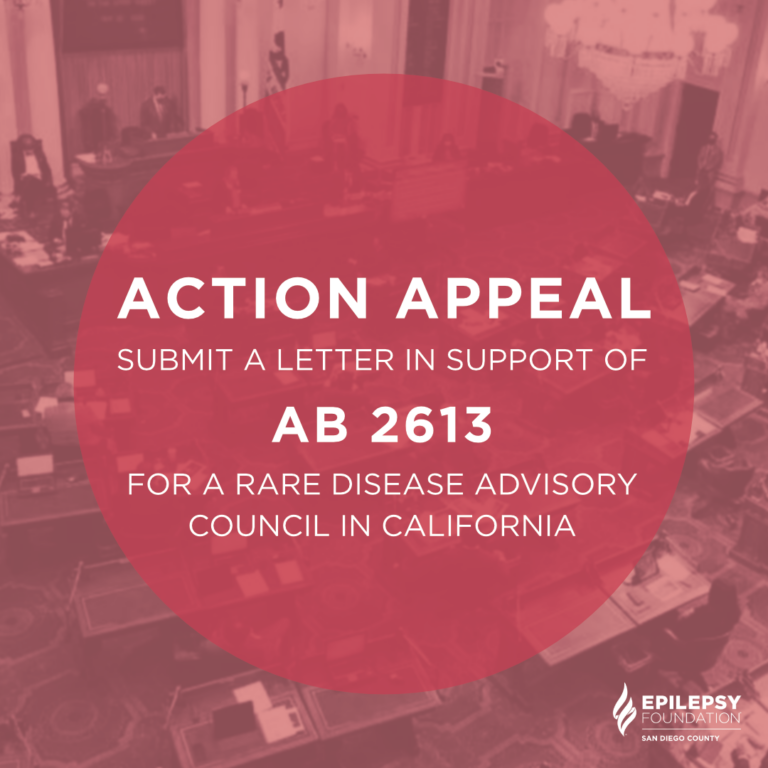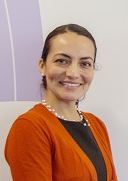
Legal
Menu
Quick Links
Menu
About Us
Menu
Medications, Surgery, Ketogenic Diet, Other Treatments: Vagus Nerve Stimulation (VNS)
Seizure-preventing medications called anticonvulsant or anti-epileptic (AED) drugs. While the medications do not cure epilepsy, they make it possible for many people to live normal, active lives completely free of seizures. Others may continue to have seizures, but less frequently.
If the drugs are not effective, other treatment methods may be used. Whenever possible, doctors try to prevent seizures with a single medication (monotherapy), although some people may need more than one medication (polytherapy) to achieve seizure control.
Like all drugs, antiepileptic medications may have both the desired effect of controlling seizures and undesirable side effects. Some of these are dose-related and occur only when a person is taking high levels of medication. Other side effects may occur regardless of dose and some may be an allergic type of reaction, such as a rash. It is important for the patient to use the medication as prescribed and inform the physician of any side effects. The following chart lists some of the various antiepileptic drugs:
Brand Name: Depakene, Depakote Generic Name: valproic acid, divalproex sodium Commonly Used For: Absence, partial, tonic-clonic, myoclonic Possible Side Effects & Adverse Reactions**: Menstrual irregularities, nausea, hair loss, weight gain, tremor, liver toxicity
Brand Name: Diastat Generic Name: Diazepam rectal gel Commonly Used For: Rectally administered for prolonged seizures & clusters Possible Side Effects & Adverse Reactions**: Drowsiness, poor coordination, unsteadiness, behavior changes Brand Name: Dilantin Generic Name: Phenytoin Commonly Used For: Partial, tonic-clonic Possible Side Effects & Adverse Reactions**: Loss of coordination, difficulty concentrating, insomnia, nausea, rash, gum overgrowth, excess hair growth, blurred or double vision Brand Name: Felbatol Generic Name: Felbamate Commonly Used For: Difficult to control seizures only; partial & secondarily generalized tonic-clonic; Lennox-Gastaut Possible Side Effects & Adverse Reactions**: Anorexia, vomiting, insomnia, headache, aplastic anemia (blood toxicity), liver toxicity Brand Name: Keppra Generic Name: Levetiracetam Commonly Used For: Partial and secondarily generalized tonic-clonic Possible Side Effects & Adverse Reactions**: Dizziness, sleepiness, weakness, unsteadiness, behavior disturbance Brand Name: Klonopin Generic Name: Clonazepam Commonly Used For: Atonic, myoclonic, absence Possible Side Effects & Adverse Reactions**: Drowsiness, fatigue, poor coordination, irritability, behavior changes Brand Name: Lamictal Generic Name: Lamotrigine Commonly Used For: Partial & secondarily generalized tonic-clonic, Lennox-Gastaut Possible Side Effects & Adverse Reactions**: Dizziness, double vision, headache, loss of coordination, nausea, rash Brand Name: Mysoline Generic Name: Primidone Commonly Used For: Partial & tonic-clonic Possible Side Effects & Adverse Reactions**: Drowsiness, confusion, unsteadiness, irritability, behavior changes, depression Brand Name: Neurontin Generic Name: Gabapentin Commonly Used For: Partial with or without secondary generalization Possible Side Effects & Adverse Reactions**: Drowsiness, dizziness, unsteadiness, blurry vision, fatigue Brand Name: N/A Generic Name: Phenobarbital Commonly Used For: Partial, tonic-clonic, myoclonic Possible Side Effects & Adverse Reactions**: Drowsiness, irritability, hyperactivity (children), behavioral changes, difficulty concentrating, depression Brand Name: Tegretol Generic Name: Carbamezepine Commonly Used For: Partial, tonic-clonic Possible Side Effects & Adverse Reactions**: Dizziness, nausea, double vision, drowsiness, rash, abnormal blood count (rare) Brand Name: Topamax Generic Name: Topiramate Commonly Used For: Partial with or without secondary generalization, Lennox-Gastaut, myoclonic Possible Side Effects & Adverse Reactions**: Dizziness, slowing, speech & language problems, cognitive slowing, unsteadiness, fatigue Brand Name: Trileptal Generic Name: Oxcarbazepine Commonly Used For: Partial Possible Side Effects & Adverse Reactions**: Dizziness, headache, sleepiness, unsteadiness, double vision, fatigue Brand Name: Zarontin Generic Name: Ethosuximide Commonly Used For: Absence Possible Side Effects & Adverse Reactions**: Drowsiness, nausea, appetite loss, stomach pain, nervousness, rash, abnormal blood count (rare) Brand Name: Zonegran Generic Name: Zonisamide Commonly Used For: Partial Possible Side Effects & Adverse Reactions**: Sleepiness, fatigue, dizziness, confusion, loss of appetite, rash.
Source: Epilepsy Foundation of America
**Side effects are individual for each person and not everyone experiences side effects. There also may be other side effects not listed here.
For more information on a specific drug, you may consult your pharmacist or physician, the drug’s prescribing information sheet or the Physician’s Desk Reference. On line resources for drug information include the following:
U.S. National Library of Medicine Medlineplus http://www.nlm.nih.gov/medlineplus/druginformation.html Lists 9,000 prescription and over-the-counter medications
RxList.com http://www.rxlist.com Information on 4,500 medications, in English and Spanish
In some people, epilepsy is caused by a specific structural problem in part or parts of the brain. In such cases, when medications cannot control seizures, some people may be helped by having brain surgery. Surgical removal of seizure-producing areas of the brain has been an accepted form of treatment for over 50 years. However, because of new surgical techniques and new ways of identifying areas to be removed, more of these operations are being done now than ever before, and with greater success. For those people for whom surgery can be considered a suitable treatment, having the surgery does not guarantee that they will be free of seizures or won’t have to take medicine anymore. However, chances are good that most people will have fewer seizures after surgery and many will become seizure-free.
Whether a person is a good candidate for surgery can only be determined after a comprehensive epilepsy evaluation which includes extensive neurological and neuropsychological testing. The tests are done to make sure the surgery has a good chance of being successful and will not affect any of the important functions of the brain. Most of the tests are used to pinpoint the area of the brain where seizures begin or to locate other areas, like speech and memory, that have to be avoided.
While there are risks in all surgical procedures, most brain surgery for epilepsy appears to be relatively safe. The success rate for epilepsy surgeries depends on the type of operation performed and can usually be predicted after all the test results are available. Risks and benefits of surgery should be carefully discussed with the neurosurgeons who are going to perform the operation.
Epilepsy Surgery involves the brain. However, different types of operations may be done. In general they fall into two main groups:
Seizures that begin in one or more areas of the brain are known as simple or complex partial seizures. The seizures can take on different forms, depending on where they originate in the brain. The brain is divided into areas called lobes. There are temporal lobes, frontal lobes, parietal lobes and occipital lobes. There are two of each lobe, one on either side of the head. A lobectomy is an operation to remove all or part of a lobe.
This type of surgery may be performed when a person has seizures that start in the same lobe every time. It is sometimes possible to stop the seizures by removing the seizure-producing area if it can be safely done without damaging vital functions.
For temporal lobectomies, 65 to 85% of patients will be seizure-free. Complications occur in about 4 out of every 100 of these operations. Depending on the kind of surgery that’s performed, possible complications include partial losses of vision, motor ability, memory or speech. Infection or temporary swelling of the brain may also sometimes happen.
A lobectomy removes a fairly small area of the brain. However, in rare cases a child may have severe brain disease on just one side of the brain which produces uncontrollable seizures and paralysis on the opposite side of the body. When this happens, a much more extensive operation may be considered. It is called a hemispherectomy and it removes all or almost all of one side (hemisphere) of the brain.
It seems impossible that someone could function with only half a brain, but in children the half that is left takes over some of the functions of the part that was removed. However, there will be weakness and loss of some function on the opposite side of the body. There will also be a loss of peripheral vision. Excellent results for this operation are being reported by the small number of very specialized centers doing these operations. However, there are more risks with hemispherectomies than with other types of epilepsy surgery.
Another kind of surgery for epilepsy is a corpus callosotomy (split brain surgery). The operation does not take out brain tissue; it interrupts the spread of seizures by cutting the nerve fibers connecting one side of the brain to the other. This nerve bridge is called the corpus callosum.
The seizures which respond to this type of surgery include uncontrolled generalized tonic clonic (grand mal) seizures, drop attacks, or massive jerking movements. These seizures affect both sides of the brain at once and there is usually no one area which can be removed to stop them from happening.
Seizures are usually not stopped entirely by the operation. Some type of seizure activity on one side of the brain or the other is likely to continue, but the effects are generally less severe than the repeated drop attacks or convulsions.
The operation is often done in two steps. The first operation partially separates the two halves of the brain but leaves some connections in place. If the generalized seizures stop, no further surgery is done. If they continue, the doctors may recommend a second step that completes the separation.
Among patients having a corpus callosotomy, risks of major and minor complications after surgery are around 20 per 100 operations. Generalized seizures may stop or happen less often than before the operation. Partial seizures (that is, changes in movement, feeling or emotions without loss of consciousness) will probably continue and may even get worse. Still, the uncontrolled drop attacks and generalized tonic-clonic seizures that the operation is designed to treat have risks of their own. Decisions to operate take all these possibilities into account.
Some seizures originate in or spread to parts of the brain that are responsible for functions such as movement or language. Removing these areas would lead to paralysis or loss of language function.
A surgical technique called multiple subpial transection (MST) may be performed in these situations. It involves making small incisions in the brain which interfere with the spread of seizure impulses.
This technique may be used alone or in addition to a lobectomy.
The above information is from EFA publication “Surgery for Epilepsy”. Additional information on epilepsy surgery may be found at Epilepsy Foundation of America ( http://www.epilepsyfoundation.org/ )

The ketogenic diet is a medical therapy that must be used under the supervision of physicians who are familiar with the diet and under the direction of dietitians who have experience with the diet. It is NOT something you can do on your own. The diet may be dangerous if not done properly.
(Information from the Johns Hopkins Pediatric Epilepsy Center Ketogenic Diet Fact Sheet)
The ketogenic diet is a therapeutic diet high in fat and very low in carbohydrates and protein. It is prescribed for children who have seizures that are difficult to control with current medications. It has had more limited use in adults who do not seem to respond as readily to it. It was developed in the 1920s and was a primary treatment prior to the introduction of antiepileptic drugs in the 1950s.
Many children with seizures can be helped by the diet. There is no way to predict whether it will be successful- except to try it. Traditionally, the diet has been used in children between 2 and 10 years of age: however, it has been used in children as young as one year, and in teens. It is difficult to begin & maintain in children under 1 year, and older children may rebel at the food restrictions. The diet seems to be most effective in children with myoclonic, atonic or tonic-clonic seizures or in the Lennox-Gastaut syndrome. When traditional anticonvulsant medications have not been effective, or if they produce unwanted side effects, the ketogenic diet may be an alternative.
Studies done over many years suggest that 20-25% of children on the ketogenic diet will have their seizures well controlled. An additional 30-40% will have their seizure frequency decreased by 50%. Approximately 25-30% of patients who try the diet will find that it is not effective.
No one is certain how it works. The diet is designed to place the body into a state of starvation forcing it to burn more fat than normal for energy. It actually simulates the biochemical changes of starvation. This results in the production of ketones which are the by-products of incompletely burned fat. The brain normally burns glucose (sugar) manufactured from muscle tissue as its source of fuel. When the body is fasting & there is no glucose, the brain is forced to use ketones manufactured from body fat as its source of energy. . When this happens, the body is in a state of ketosis. How the burning of these ketones controls seizures is unknown.
Ketosis is produced by eating foods that are ketogenic (fats) and avoiding foods which are anti-ketogenic (carbohydrates and proteins). Dietitians calculate how many calories a child needs for energy and growth. This amount is about 75% of the usual recommended daily allowance (RDA) for the child’s age. The diet is usually started in a 4:1 ratio (4 parts fat to 1 part protein & carbohydrate) or in a 3:1 ratio. The dietitian calculates meal plans and each meal is very precisely calculated to give the exact number of grams for each food item. It is imperative to maintain the diet exactly as planned. Even small amounts of carbohydrates such as a cookie, several nuts or a carbohydrate-containing toothpaste may eliminate the ketosis and nullify the effects of the diet.
The diet is usually started in the hospital and is always done under careful medical supervision where the child can be strictly monitored. It is usually started by not allowing the child to eat anything and giving limited amounts of water. After several days of starvation the ketones in the blood and urine rise and the diet is then gradually introduced. The parents learn how to prepare the diet and monitor its effects by measuring the ketones in the urine with a tablet or special test paper.
They are getting enough calories, but the amount of food seems very small by normal dietary standards. This is because fat, which is concentrated in calories, is included in large amounts. Protein is adequate to maintain weight and perhaps some growth. However, the diet is not nutritionally adequate and daily vitamins and mineral supplements are necessary.
The obvious benefit is the potential for seizure control. Sometimes seizures are controlled as soon as the child becomes ketotic, but this effect may sometimes take a month or two, occasionally longer. Another benefit is that frequently the antiepileptic medications can be gradually reduced or discontinued, leaving the child with none of the side effects of medication.
The diet is very restrictive, but the restrictions are usually worthwhile if seizures stop or are significantly reduced. Only the foods and the quantities calculated into the diet can be consumed. Medications which are not sugar-free must be avoided.
During the initiation of the diet there may be nausea, vomiting and even low blood sugars. This is the reason for starting the diet in the hospital. The ketosis decreases the child’s appetite, so even though the portions are small, hunger is not a problem for most children. Occasionally children develop kidney stones, but adjustment of the calcium supplements in the diet and increasing the daily fluids usually resolves the problem. Constipation is often a problem. Ketosis increases absorption of some medications; therefore each child should be monitored for toxicity, and medication dosage should be adjusted when necessary.
The main variation of the diet is the MCT (medium-chain triglyceride) diet which allows a slightly greater proportion of carbohydrates and protein while maintaining ketosis. While reported to be as effective as the traditional diet, it seems less well tolerated causing nausea, vomiting, cramps and diarrhea.
When a +child’s seizures are well controlled, the diet is usually continued for two years. If seizures are controlled, the diet is then decrease to a 3:1 ratio and after six months to a 2:1 ratio, than discontinued after another year. Children whose seizures are improved but not controlled may remain on the diet for years. Many children continue to go without seizures or other medications when the diet has been discontinued.
For further information:
A Ketogenic Diet video & additional information are available from the Charlie Foundation to Help Cure Pediatric Epilepsy, 1223 Wilshire Blvd #815, Santa Monica CA 90403-5406, 1-800-367-5386
The Ketogenic Diet: A Treatment for Epilepsy, John Freeman, MD, Jennifer Freeman, and Millicent Kelly, RD, LD, Demos Medical Publishing, Inc., NY, 2000 can be ordered through your local bookstore, the publisher, or the EFA catalog (1-800-213-5821).
Packard Children’s Hospital, Stanford University Medical Center http://www.stanford.edu/group/ketodiet Information on the ketogenic diet and ketogenic diet resources

Vanessa has been a dietitian in the diabetes clinic at Rady Children’s for about nine years and a certified diabetes educator for five years. Vanessa also speaks Spanish fluently and sees diabetes patients in one-on-one education appointments. She has given numerous talks and media interviews on diabetes prevention and nutrition in the community since the start of her career. She graduated from UC San Diego with a Bachelor of Science in biochemistry and cell biology and has a Master of Public Health. She loves cooking, baking, traveling and spending time with her 1-year-old son and her husband, who just happens to be a diabetes and endocrinology doctor.

With your help, The Epilepsy Foundation of San Diego County improves the lives of people affected by epilepsy through education, advocacy, research, and connection.